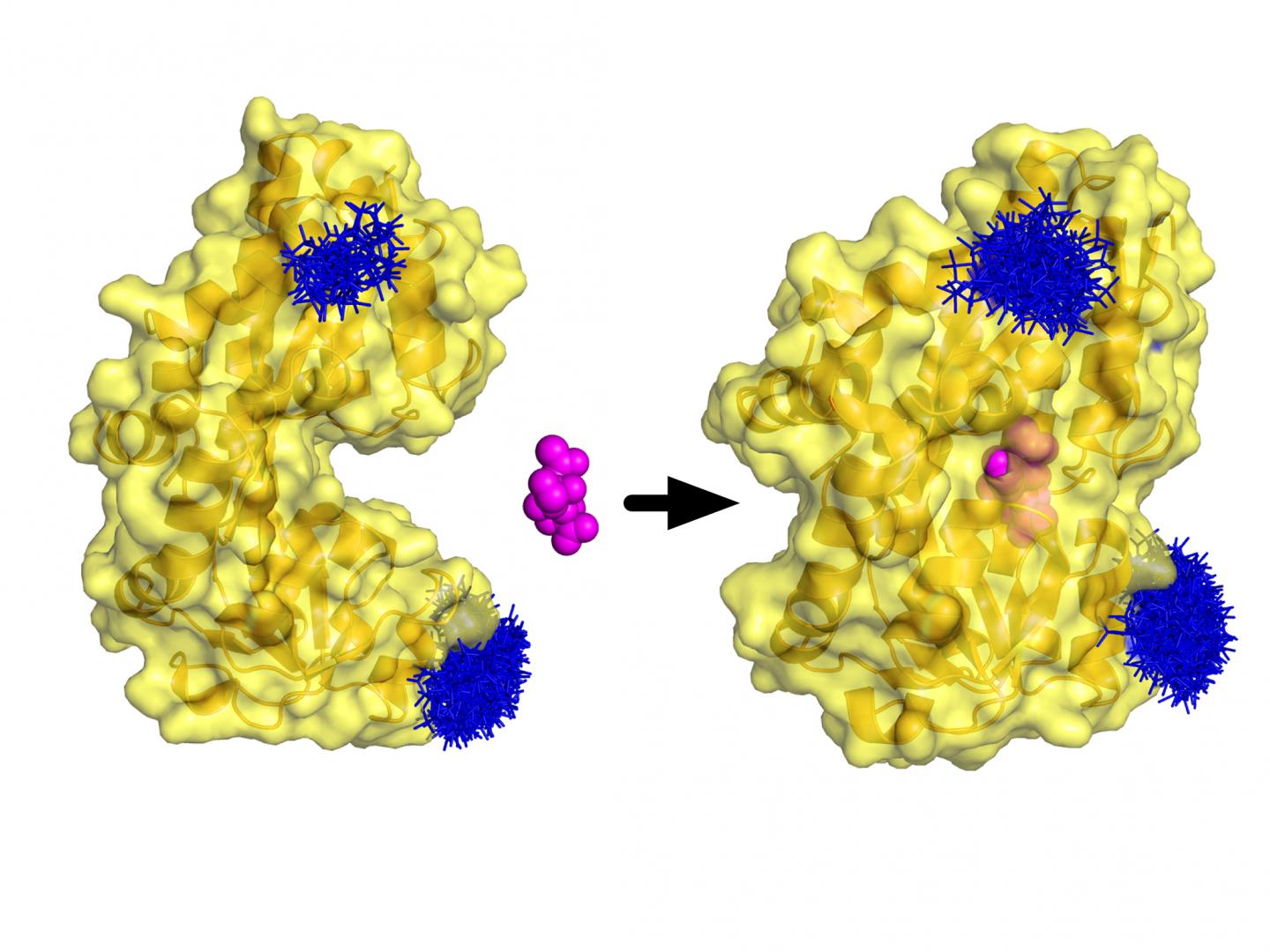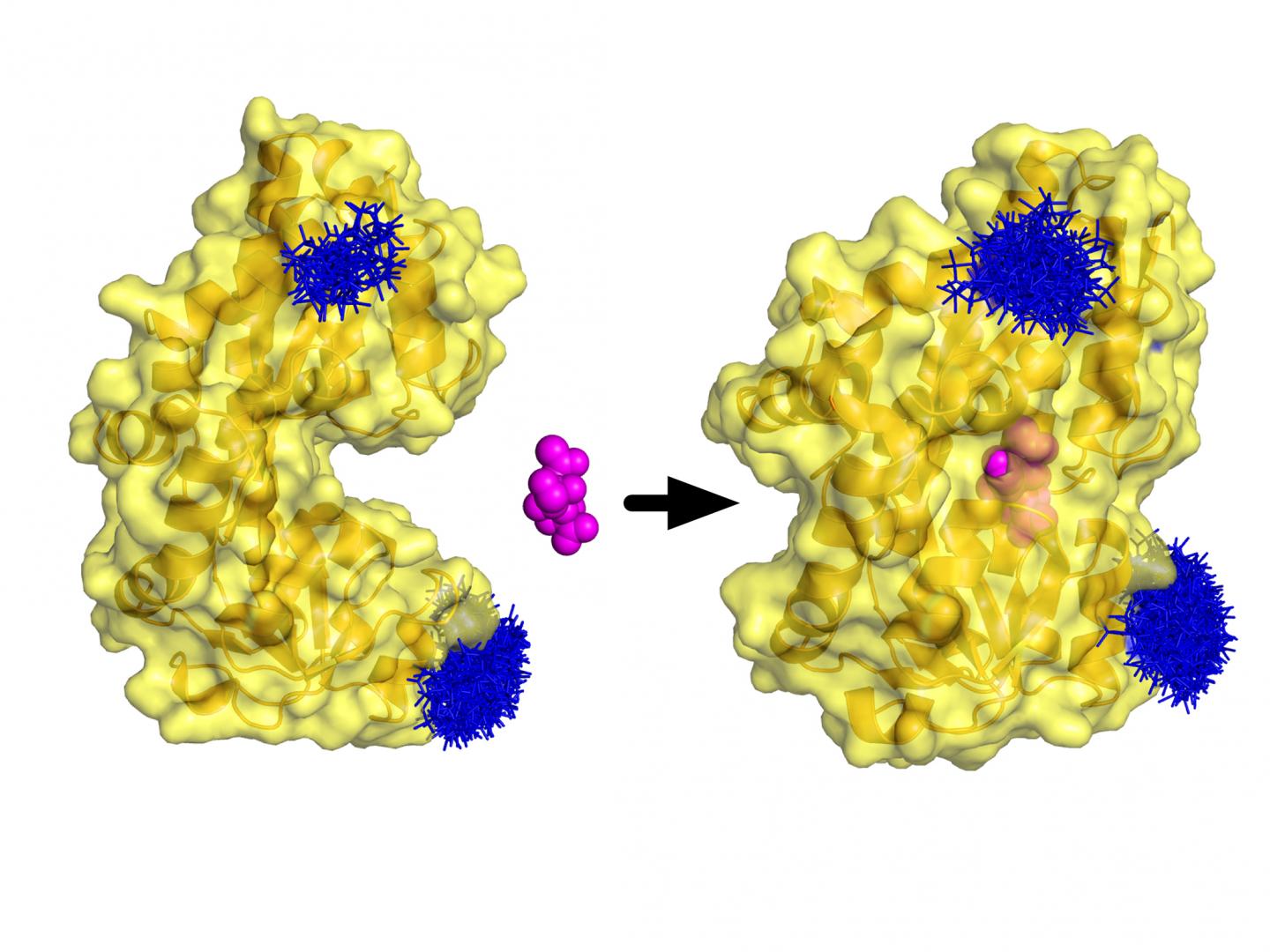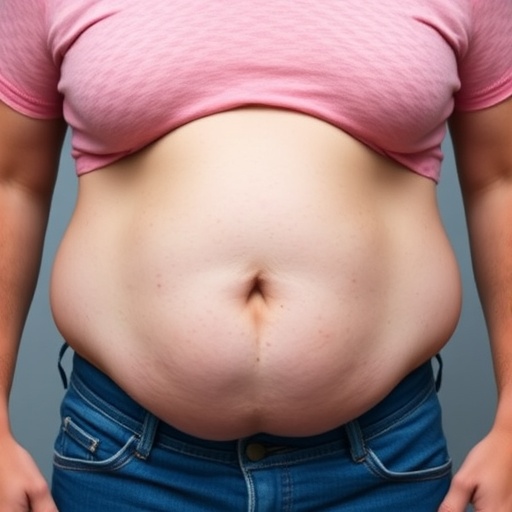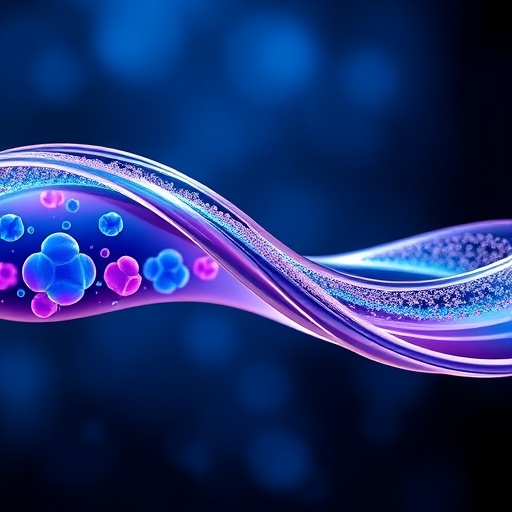
Credit: © Dr. Gregor Hagelüken/Uni Bonn
Many pathogens use certain sugar compounds from their host to help conceal themselves against the immune system. Scientists at the University of Bonn have now, in cooperation with researchers at the University of York in the United Kingdom, analyzed the dynamics of a bacterial molecule that is involved in this process. They demonstrate that the protein grabs onto the sugar molecule with a Pac Man-like chewing motion and holds it until it can be used. Their results could help design therapeutics that could make the protein poorer at grabbing and holding and hence compromise the pathogen in the host. The study has now been published in Biophysical Journal.
The cells of the mouth, nose and intestinal mucosa produce large quantities of a chemical called sialic acid. Many bacteria possess a special transport system with which they can absorb the sugar compound. They use sialic acid, for instance, to produce energy, but also to escape the eagle eyes of the immune system. To do this, they incorporate the sugar into their cell surface. Thanks to this invisibility cloak made from substances produced naturally in the body, immune cells do not notice that the bacteria are intruders.
Many bacteria are surrounded by two membranes, which cover them like a thick skin. The absorption of sialic acid through the inner membrane often takes place via molecules that are known as TRAP transporters. They are comprised of three components. One of these — the P domain — moves freely and patrols between the two membranes. If it meets a sialic acid molecule, it grabs it and brings it to the inner membrane, where the two other components are firmly anchored. They then translocate the sugar compound into the bacteria cell.
Rapid masticatory movement
"The atomic structure of the P domain was already known," explains Dr. Gregor Hagelüken from the Institute for Physical and Theoretical Chemistry at the University of Bonn. "Together with our collaborator Dr. Gavin Thomas from the University of York, we wanted to analyse how exactly the P domain grabs the sialic acid. We have now been able to show that – metaphorically speaking – it lies in wait with its mouth open until it encounters a sugar molecule. At this moment, its jaws snap shut." The P domain thus performs a rapid grabbing motion, which is somewhat reminiscent of the computer game character Pac Man.
The researchers used EPR spectroscopy in their work, a method with which the distances between parts of molecules can be measured precisely to a ten-millionth of a millimeter. In this way, they were able to understand the movement of the "Pac Man jaw".
"To achieve this, we planted the blueprint for the P domain in harmless intestinal bacteria and grew them in a test tube," explains Janin Glänzer, PhD student at the Institute for Physical and Theoretical Chemistry. "We then cleaned the protein in an elaborate procedure and provided it with various quantities of sialic acid." In order to investigate the masticatory movement, the researchers used a trick: they fitted molecular labels to the "jaw" of the P domain and then measured the precise distance between these markers. "We were able to show that the P domain can only exist in two forms: opened and closed," says the chemist Martin Peter, who worked on this topic in his master thesis. "We were not able to identify any stable intermediate form. Without sialic acid, all P domains are found in an open state. The more sugar we provided, the more P domains were closed."
Hagelüken hopes that the knowledge may help to develop new active ingredients against pathogens. "We can, for instance, attempt to prevent the masticatory movement – for example, using a molecular muzzle."
###
Publication: J. Glaenzer, M. Peter, G. H. Thomas, G. Hagelueken: PELDOR Spectroscopy Reveals Two Defined States of a Sialic Acid TRAP Transporter SBP in Solution, Biophysical Journal, DOI: 10.1016/j.bpj.2016.12.010
Contact:
Dr. Gregor Hagelüken
Institute for Physical and
Theoretical Chemistry
University of Bonn
Tel. 49-0-228/733830
E-mail: [email protected]
Media Contact
Dr. Gregor Hagelüken
[email protected]
49-228-733-830
@unibonn
http://www.uni-bonn.de
############
Story Source: Materials provided by Scienmag





